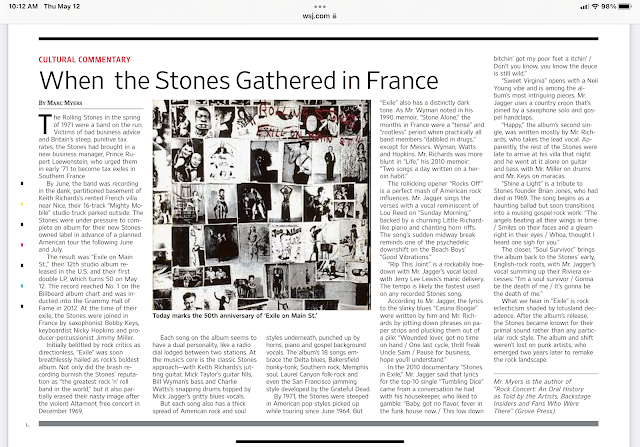 Mainline Florida: Link to Mainline Florida.
Mainline Florida: Link to Mainline Florida.
Imagine Sheena Easton singing for Jim:
The love I know you need in me
…But you won't need to read between the lines
Oooooooh!
Some very Talented Artists and Pilots
At the end are some interesting/amazing WWII statistics....
A little different than "today's nose art"...……...
Back in the day when America was in the "Big War" WWII, these planes were flown by young boys! Apparently no one worried about nose art on the bombers.
BTW. More airmen died in WWII than Marines. At the bottom after the pictures there are amazing stats for the Army Aircorps in WWII.
Almost 1,000 Army planes disappeared on route from the US to foreign locations. But an eye-watering 43,581 aircraft were lost overseas including 22,948 on combat missions (18,418 against the Western Axis) and 20,633 attributed to non-combat causes overseas.
In a single 376 plane raid in August 1943, 60 B-17s were shot down. That was a 16 percent loss rate and meant 600 empty bunks in England. In 1942-43 it was statistically impossible for bomber crews to complete a 25-mission tour in Europe.
Pacific theatre losses were far less (4,530 in combat) owing to smaller forces committed. The worst B-29 mission, against Tokyo on May 25, 1945, cost 26 Super Fortresses, 5.6 percent of the 464 dispatched from the Marianas.
On average, 6,600 American servicemen died per month during WWII, about 220 a day. By the end of the war, over 40,000 airmen were killed in combat theatres and another 18,000 wounded. Some 12,000 missing men were declared dead, including a number “liberated" by the Soviets but never returned.
More than 41,000 were captured, half of the 5,400 held by the Japanese died in captivity, compared with one-tenth in German hands. Total combat casualties were pegged at 121,867.
US manpower made up the deficit The AAF's peak strength was reached in 1944 with 2,372,000 personnel, nearly twice the previous year's figure. The losses were huge---but so were production totals. From 1941 through 1945, American industry delivered more than 276,000 military aircraft. That number was enough not only for US Army, Navy and Marine Corps, but for allies as diverse as Britain, Australia, China and Russia.
In fact, from 1943 onward, America produced more planes than Britain and Russia combined. And more than Germany and Japan together 1941-45.
However, our enemies took massive losses. Through much of 1944, the Luftwaffe sustained uncontrolled hemorrhaging, reaching 25 percent of aircrews and 40 planes a month. And in late 1944 into 1945, nearly half the pilots in Japanese squadrons had flown fewer than 200 hours.
The disparity of two years before had been completely reversed.
Experience Level:
Uncle Sam sent many of his sons to war with absolute minimums of training. Some
fighter pilots entered combat in 1942 with less than one hour in their assigned aircraft.
The 357th Fighter Group (often known as The Yoxford Boys) went to England in late 1943 having trained on P-39s. The group never saw a Mustang until shortly before its first combat mission.
A high-time P-51 pilot had 30 hours in type. Many had fewer than five hours. Some had one hour.
With arrival of new aircraft, many combat units transitioned in combat.
The attitude was, “They all have a stick and a throttle. Go
fly 'em."
When the famed 4th Fighter Group converted from P-47s to P-51s in February 1944, there was no time to stand down for an orderly transition.
The Group commander, Col. Donald Blakeslee, said, “You can learn to fly `51s on the way to the target.”
A future P-47 ace said, “I was sent to England to die." He was not alone.
Some fighter pilots tucked their wheels in the well on their first combat mission with one previous flight in the aircraft. Meanwhile, many bomber crews were still learning their trade: of Jimmy Doolittle's 15 pilots on the April 1942 Tokyo raid, only five had won their wings before 1941. All but one of the 16 copilots were less than a year out of flight school.
In WWII flying safety took a back seat to combat. The AAF's worst accident rate was recorded by the A-36 Invader version of the P-51: a staggering 274 accidents per 100,000 flying hours.
Next worst were the P-39 at 245, the P-40 at 188, and the P-38 at 139. All were Allison powered.
Bomber wrecks were fewer but more expensive. The B-17 and B-24 averaged 30 and 35
accidents per 100,000 flight hours, respectively—a horrific figure considering that from 1980 to 2000 the Air Force's major mishap rate was less than 2.
The B-29 was even worse at 40; the world’s most sophisticated, most capable and most expensive bomber was too urgently needed to stand down for mere safety reasons. The AAF set a reasonably high standard for B-29 pilots, but the desired figures were seldom attained.
The original cadre of the 58th Bomb Wing was to have 400 hours of multi-engine time, but there were not enough experienced pilots to meet the criterion. Only ten percent had overseas experience. Conversely, when a $2.1 billion B-2 crashed in 2008, the Air Force initiated a two-month "safety pause" rather than declare a "stand down", let alone grounding.
The B-29 was no better for maintenance. Though the R3350 was known as a complicated, troublesome power-plant, no more than half the mechanics had previous experience with the Duplex Cyclone. But they made it work.
Navigators:
Perhaps the greatest unsung success story of AAF training was Navigators. The Army graduated some 50,000 during the War. And many had never flown out of sight of land before leaving “Uncle Sugar" for a war zone. Yet the huge majority found their way across oceans and continents without getting lost or running out of fuel --- a stirring tribute to the AAF's educational establishments.
Cadet To Colonel:
It was possible for a flying cadet at the time of Pearl Harbor to finish the war with eagles on his shoulders. That was the record of John D Landers, a 21-year-old Texan, who was commissioned a second lieutenant on December 12, 1941. He joined his combat squadron with 209 hours total flight time, including 2 in P-40s. He finished the war as a full colonel, commanding an
8th Air Force Group --- at age 24.
As the training pipeline filled up, however those low figures became exceptions. By early 1944, the average AAF fighter pilot entering combat had logged at least 450 hours, usually including 250 hours in training. At the same time, many captains and first lieutenants claimed over 600 hours.
FACT:
At its height in mid-1944, the Army Air Forces had 2.6 million people and nearly 80,000 aircraft of all types.
Today the US Air Force employs 327,000 active personnel (plus 170,000 civilians) with 5,500+ manned and perhaps 200 unmanned aircraft.
The 2009 figures represent about 12 percent of the manpower and 7 percent of the airplanes of the WWII peak.
IN SUMMATION:
Whether there will ever be another war like that experienced in 1940-45 is doubtful, as fighters and bombers have given way to helicopters and remotely-controlled drones over Afghanistan and Iraq. But within living memory, men left the earth in 200-plane formations and fought major battles five miles high, leaving a legacy that remains timeless.
That little yellow thing at the top of the picture is a CAT-9 bulldozer. It is burying acres and acres of windmill blades used for “Green Energy.” Why?
Because these blades need to be disposed of, and there is presently no way to recycle them. That’s how green energy works! Who knew? Maybe the people that make them knew. Why would they let that cat out of the bag? After all, they are government-subsidized with tax-payer money (just like every electric car). Also, politicians do not want those huge eyesores in their backyard.
Right now, the average wind farm contains about 150 turbines. Each wind turbine needs 80 gallons of oil as a lubricant, and we're not talking about vegetable oil, this is a PAO synthetic oil based on crude. 12,000 gallons of it for 150 turbines, and that oil needs to be replaced once a year. It is estimated that a little over 3,800 turbines would be needed to power a city the size of New York... That's 304,000 gallons of refined oil per year for just one city. That’s 25+ wind farms.
Now, you have to calculate every city across the nation, large and small, to find the grand total of yearly oil consumption from “clean” energy. Where do you think all that oil is going to come from? Well, since January 2021, it comes from our enemies in the Mideast. Not to mention the fact that the large equipment needed to build these wind farms runs on petroleum. As well as the equipment required for installation, service, maintenance, and eventual removal. And just exactly how eco-friendly is wind energy anyway?
Each turbine requires a footprint of 1.5 acres, so a wind farm of 150 turbines needs 225 acres. To power a city the size of NYC, you'd need 57,000 acres; and who knows the astronomical amount of land you would need to power the entire US. All of which would have to be clear-cut land because trees create a barrier and turbulence that interferes with the 20mph sustained wind velocity necessary for the turbine to work properly. Also, keep in mind that not all states are suitable for such sustained winds. Boy, cutting down all those trees is gonna upset a lot of green-loving tree-huggers.
Let's now talk about disposal.
The lifespan of a modern, top-quality, highly efficient wind turbine is 20 years. After that, what happens to those gigantic fiber composite blades? They cannot be economically reused, refurbished, reduced, repurposed, or recycled. So, it's off to special landfills they go. And, they're already running out of these special landfill spaces for the used blades that have already exceeded their usefulness. Those blades are anywhere from 120 ft. to over 200 ft. long, and there are 3 per turbine. And that's with only 3% to 7% of the nation currently being supplied with (intermittent, i.e., unreliable) wind energy. Just imagine if we had the other 93% of the nation on the wind grid... 20 years from now you'd have all those unusable blades with no place to put them... Then 20 years after that, and 20 years after that, and so on. “Green energy?”
Also, about 500,000 birds are killed each year from wind turbine blade collisions, many of which are endangered hawks, falcons, owls, geese, ducks, and eagles. Apparently, smaller birds are more agile and able to dart and dodge out of the way of the spinning blades, whereas the larger soaring birds aren't so lucky.
Here's another problem with windmills. The generator and switching equipment operate at high power and voltage. Everything in the windmill nacelle (look it up) is compact due to limited space, so there's a danger of arcs and electrical fires. This is prevented by putting all the electrical equipment in a pressure vessel filled with sulfur hexafluoride (SF6), a synthetic gas that has dielectric properties which suppress arcs and fires. However, windmills leak this gas, something around a pound each per year. SF6 has an atmospheric lifetime of 3,200 years and is 22,800 times more effective as a greenhouse gas than carbon.
THIS IS ANOTHER ITEM THAT FALLS UNDER THE CATEGORY OF, “GEE WHIZ, I GUESS WE DIDN’T THINK THIS THROUGH”(!!!)
Someone that lives in that kind of detachment is free, and because they are free, they are powerful. They are beyond the threats that arise in the context of this world. This is the source of dynamis, real power. This is the power that Martin Luther King Jr., Dorothy Day, and John Paul II wielded: world-changing power.


















































No comments:
Post a Comment